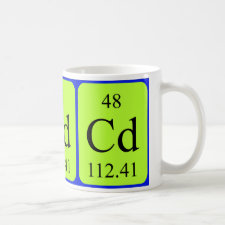
Authors: Asir S, Uzun L, Türkmen D, Say R, Denizli A
Article Title: Ion-selective imprinted superporous monolith for cadmium removal from human plasma.
Publication date: 2005
Journal: Separation Science and Technology
Volume: 40
Issue: (15)
Page numbers: 3167-3185.
DOI: 10.1080/01496390500385376
Alternative URL: http://www.informaworld.com/10.1080/01496390500385376
Abstract: Molecular recognition based separation systems have received much attention because of their high selectivity for target molecules. Molecular imprinting has been recognized as a promising technique for the development of affinity adsorbents. Molecularly imprinted polymers (MIP) are easy to prepare, stable, inexpensive, and capable of molecular recognition. Cadmium is a carcinogenic and mutagenic element. The limit value of cadmium in blood should be no higher than 50 pg/L when exposure to cadmium is unavoidable in industry. There is no specific treatment available for acute or chronic metal poisoning. Besides supportive therapy and hemodialysis, metal poisoning is often treated with commercially available chelating agents including EDTA and dimercaprol. However, there is histopathological evidence for increased toxicity in animals when these agents are utilized. The aim of this study is to prepare superporous ion-imprinted polymer monolith which can be used for the selective removal of Cd2+ ions from Cd2+-overdosed human plasma. N-methacryloly-(L)-cysteinemethylester (MAC) was chosen as the complexing monomer. In the first step, MAC synthesized by using methacryloyl chloride and cysteine. Cd2+ was complexed with MAC monomer and the Cd2+-imprinted poly(HEMA-MAC) monoliths were synthesized by bulk polymerization. After that, Cd2+ ions were removed by 0.1 M thiourea and 0.1 M HNO3 solutions, respectively. Cd2+-imprinted poly(HEMA-MAC) monoliths had a specific surface area of 226.8 m2/g and the swelling ratio was determined to be 76%. According to the elemental analysis results, monoliths contain approximately 58.3 μmol/g of MAC. The maximum adsorption capacity for Cd2+ ions was 26.6 μmol/g of the dry weight of monolith. The adsorption capacity decreased significantly from 23.25 μmol/g to 3.08 μmol/g polymer with the increase of the flow-rate from 1 mL/min to 4 mL/min. The Cd2+-imprinted poly(HEMA-MAC) monolith could be used many times without decreasing their adsorption capacities significantly.
Template and target information: cadmium ion, Cd(II)
Author keywords: ion imprinting, molecular recognition, cadmium removal, metal detoxification, affinity binding



Join the Society for Molecular Imprinting

New items RSS feed
Sign-up for e-mail updates:
Choose between receiving an occasional newsletter or more frequent e-mail alerts.
Click here to go to the sign-up page.
Is your name elemental or peptidic? Enter your name and find out by clicking either of the buttons below!
Other products you may like:
 MIPdatabase
MIPdatabase









